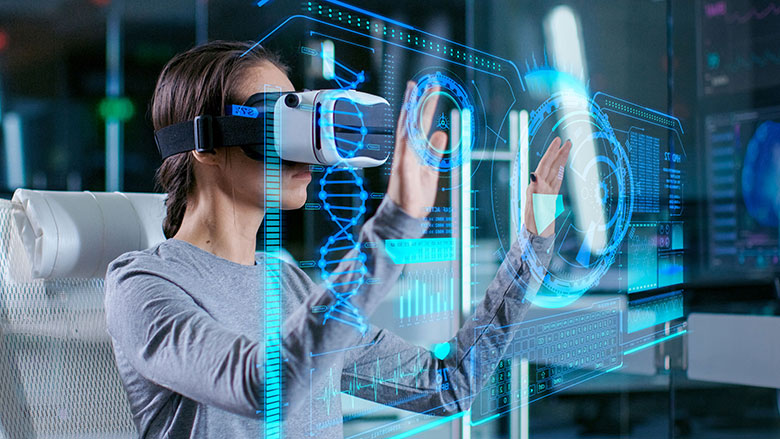In the realm of Health, Safety, and Environment (HSE) training, the conventional model often depicted classroom settings, paper-based materials, and perhaps the occasional video or Powerpoint presentation. This traditional method has its downsides – students can tune out, struggle to apply what they’ve learned, and forget crucial details soon after. As workplace hazards and occupational risks escalate, it’s clear that a sea change in HSE training is long overdue.
The traditional HSE training, often criticized for its one-size-fits-all methodology, hardly caters to the diverse learning needs of the modern workforce. With each new breakthrough in technology and educational theory, the call for captivating, results-driven training solutions grows louder – solutions that bring people to the edge of their seats and keep them coming back for more. What if you could primed your employees to succeed in the real world? These pioneering approaches do just that, bridging the gap between training and workplace reality, and markedly improving safety and compliance in the process.
Virtual Reality (VR) – Immersive Training Experiences
Explanation of VR technology: Virtual Reality (VR) transports users to a fully digital environment, using headsets that offer visual, auditory, and sometimes even tactile feedback. Imagine participating in a training session that blends seamlessly into your real-world challenges, making it the most immersive HSE training you’ve ever had – that’s what this tech delivers.
Benefits of using VR for HSE training: VR provides a safe sandbox for employees to experience hazardous scenarios without the real-world risk. For instance, fire evacuation drills, equipment operation, or even high-altitude training can be simulated, allowing employees to practice their responses to emergencies. What sets VR apart is its incredible ability to get learners directly involved in the learning process. As a result, they’re much more likely to remember the safety procedures being taught.
Augmented Reality (AR) – Enhancing Real-world Training
Understanding AR and its differences with VR: Unlike VR’s completely simulated environment, Augmented Reality (AR) overlays digital information onto the real world, enhancing but not replacing the physical environment. Using devices like smartphones or AR glasses, users can see and interact with digital elements as if they were part of their actual surroundings.
Application of AR in HSE scenarios: AR can augment traditional training methods by providing real-time data, visual aids, and procedural guidelines directly in the user’s field of view. For instance, training on complex machinery can be enhanced with AR to show step-by-step instructions over the actual equipment, thereby reducing errors and improving understanding.
Mobile Learning – HSE Training on the Go
Advantages of mobile learning platforms: Mobile learning introduces unparalleled flexibility and accessibility to HSE training. For the overwhelmed and overworked, some respite has arrived. This adaptable solution cleverly plugs into employees’ scant downtime, fuelling a noteworthy uptick in compliance – and a collective sigh of relief.
Gone are the days of tedious, out-of-touch HSE training methods; mobile apps are breathing new life into this essential sector, empowering learners to take charge of their own development, wherever, whenever. Mobile apps can put the entire spectrum of interactive learning experiences at your fingertips – mastering core concepts with flashcards, exploring new ideas through scenario-based videos, or simply testing your knowledge with a quick quiz on the go. Employees stay up-to-date on the latest safety protocols and regulations thanks to regular notifications and updates that keep them informed.
Gamification – Engaging Employees in Learning
How incorporating game elements increases engagement: Gamification introduces game-based elements like points, badges, and leaderboards into the learning experience. Harness the competitive drive that’s inherent in all of us, and suddenly learning becomes a fun, high-stakes game – and we can’t get enough.
Examples of gamified HSE training: From safety compliance quizzes that reward points for correct answers to simulation games that teach emergency response strategies, gamification can make learning stick by making it enjoyable and rewarding.
Microlearning – Bite-sized HSE Training Sessions
The concept of microlearning and its relevance to HSE: Microlearning breaks down training content into small, manageable units, making it easier for learners to absorb and retain the information. HSE training demands precision, and the ability to recall specific procedures and protocols is crucial – it’s what saves lives.
The effectiveness of short-duration, focused training modules: These concise, focused sessions fit easily into workers’ schedules, improving completion rates and knowledge retention. Learners can recharge their knowledge on critical safety topics without feeling overwhelmed, thanks to these resources that dish out information in manageable chunks.
Artificial Intelligence (AI) – Personalized HSE Training
AI in the adaptation of training content for individual learning needs: AI can analyze learners’ performance and tailor the training content to meet their specific needs, weaknesses, and strengths. Imagine a learning path that intuitively diagnoses knowledge gaps, addressing the very areas where you need a boost – that’s what this approach is all about.
Predictive analytics for assessing potential HSE risks: Beyond personalization, AI can use data analytics to predict potential HSE risks specific to an organization or even an individual, allowing for proactive training that can prevent accidents before they occur.
Social Learning – Collaborative HSE Training Techniques
The importance of social interaction in learning processes: Social learning theory posits that people learn from one another through observation, imitation, and modeling. It’s all about building a hive mind in HSE training – when colleagues can openly share their experiences and know-how, everyone benefits.
Using social media and forums to enhance HSE knowledge sharing: Want to unlock the full potential of collaborative learning? Leverage technology to connect with others, swap perspectives, and tap into a wealth of knowledge – be it through interactive online forums, social media channels, or cutting-edge learning management systems.
Blended Learning – Combining Online and Offline Training Methods
Integration of various training methods for comprehensive HSE education: Blended learning combines online digital media with traditional classroom methods. Imagine having the flexibility to learn anywhere, anytime, while still benefiting from the insights and guidance of experienced instructors – that’s the power of our hybrid learning model.
The balance and benefits of both in-person and online training solutions: By leveraging the strengths of both methodologies, blended learning offers a more comprehensive training experience that can cater to different learning styles and needs.
E-Learning Platforms – Centralized HSE Training
Role of Learning Management Systems (LMS) in HSE training: Learning Management Systems for training providers are software applications that administer, document, track, and report on training programs. For e-learning to truly thrive, a centralized platform is essential – and that’s exactly what they offer, bringing all HSE training materials under one convenient roof.
Tracking and assessing employee progress through e-learning HSE training platforms like Pixaera: With these platforms, organizations gain a bird’s eye view of learner progress, can challenge learners with quizzes and assessments, and get a clean bill of health on meeting training requirements.
HSE Training Online – Accessibility and Flexibility
Online training demolishes geographical and temporal barriers, making HSE education accessible to a wider audience. Multinational teams and remote workers, in particular, will find this especially relatable.
The value of flexibility in online training schedules for diverse workforces: Online HSE training accommodates varying schedules, learning paces, and styles, ensuring that all employees have the opportunity to engage with and complete their training irrespective of their location or time constraints.
Conclusion
HSE training is getting a reboot, courtesy of digital innovation and fresh perspectives on how people really learn. Training just got a whole lot more interesting – and effective. The outcome? A workplace that’s safer, more compliant, and better equipped to thrive. Imagine walking into a workplace where everyone is prepared for any situation, and safety is the top priority. That’s the future we’re headed towards with advancements in HSE training. As we trade in traditional training methods for immersive experiences like VR and AR, mobile learning, and AI-driven personalized training, we’re not just upping our HSE game – we’re forging a new path towards workplace safety and accountability that resonates globally.


